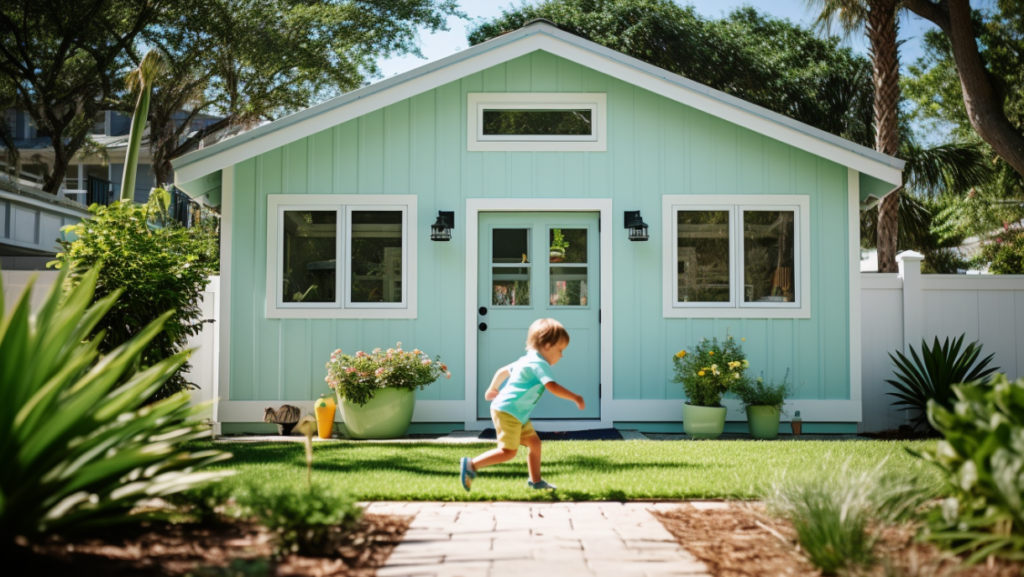Tiny homes are revolutionizing modern housing, offering an affordable, sustainable, and minimalist alternative to traditional homes. These compact spaces cater to a variety of needs, whether as a primary residence, rental property, or workspace. In this article, we’ll dive into the world of tiny homes, explore their benefits, and explain why they are a smart choice for many.
What Are Tiny Homes?
Tiny homes are small residential units, typically ranging from 10 to 50 square meters, designed to provide all the essentials for comfortable living. Despite their size, they include fully functional kitchens, bathrooms, bedrooms, and living areas.
The versatility of tiny homes makes them suitable for various purposes:
- Primary homes. A cost-effective and sustainable living solution.
- Guest accommodations. A perfect option for hosting visitors.
- Rental properties. Ideal for short-term or long-term rentals.
- Creative spaces. Great for home offices or studios.
Although the term tiny house is sometimes used interchangeably, tiny homes better describe the broad appeal and flexibility of these compact dwellings.
Benefits of Tiny Homes
1. Affordability
Building or buying a tiny home is significantly cheaper than a traditional house:
- Construction costs usually range between $20,000 and $100,000.
- Lower expenses for land, maintenance, and utilities.
- Ideal for those looking to own a home without a large mortgage.
2. Reduced Utility Costs
- Smaller spaces mean less energy is needed for heating, cooling, and lighting.
- Solar panels or energy-efficient systems can further lower monthly bills.
3. Eco-Friendly Living
- Tiny homes require fewer building materials, reducing environmental impact.
- Compact designs encourage sustainable practices, such as water conservation and waste reduction.
- Solar power and eco-friendly systems make them a green housing choice.
4. Simplified Lifestyle
- A smaller space promotes decluttering and focusing on what truly matters.
- Less cleaning and maintenance allows for more free time.
- Encourages a minimalist lifestyle that prioritizes experiences over possessions.
5. Flexible Use
- Tiny homes can serve as standalone residences, backyard guest houses, or even mobile homes for travel enthusiasts.
- Their adaptability makes them suitable for urban, suburban, and rural settings.
6. Efficient Land Use
If you own property, adding a tiny home maximizes its value, offering extra living or rental space.
7. Quick Construction
Building a tiny home is faster and easier compared to traditional homes:
- Modular and prefab designs can be completed within weeks.
- Mobile tiny homes can be ready for use almost immediately.

Building Tiny Homes: How to Start
Efficient Space Design
Making the most of limited space is essential for tiny homes:
- Smart furniture. Multi-functional pieces like foldable beds and convertible tables maximize utility.
- Vertical storage. Use shelves, lofts, and built-ins to free up floor space.
- Natural light. Large windows and skylights make the space feel bigger.
Sustainable Materials
- Reclaimed wood. For warmth and sustainability.
- Lightweight metal. Durable and modern.
- Eco-friendly insulation. Keeps energy use low.
Technology Integration
- Solar panels. Enable off-grid living and lower energy bills.
- Smart systems. Control lighting, heating, and security remotely.
- Water-saving systems. Reduce waste and improve efficiency.
Legal Considerations
Before building, research zoning laws and permits in your area. Some jurisdictions may have specific regulations for tiny homes or tiny houses.
Who Are Tiny Homes Perfect For?
- First-time homeowners. Affordable entry into the housing market.
- Retirees. A low-maintenance option for downsizing.
- Families. An additional living unit on existing property.
- Entrepreneurs. Ideal for rental income or Airbnb hosting.
- Digital nomads. A compact and mobile living solution.
Challenges to Consider
While tiny homes offer numerous advantages, there are some limitations:
- Limited storage space requires careful planning.
- Adjusting to a minimalist lifestyle may be difficult for some.
- Zoning laws and building regulations may restrict placement.
Why Choose Tiny Homes?
Choosing a tiny home allows you to embrace a lifestyle of simplicity and freedom. They are not just a housing trend but a solution to modern challenges like high living costs and environmental concerns. A tiny home offers financial independence, environmental sustainability, and the chance to live with less while experiencing more.
Whether you’re looking to build a cozy retreat or a mobile adventure home, tiny homes deliver big benefits in a small package. If you’re ready to make the shift, start planning your tiny home today!
